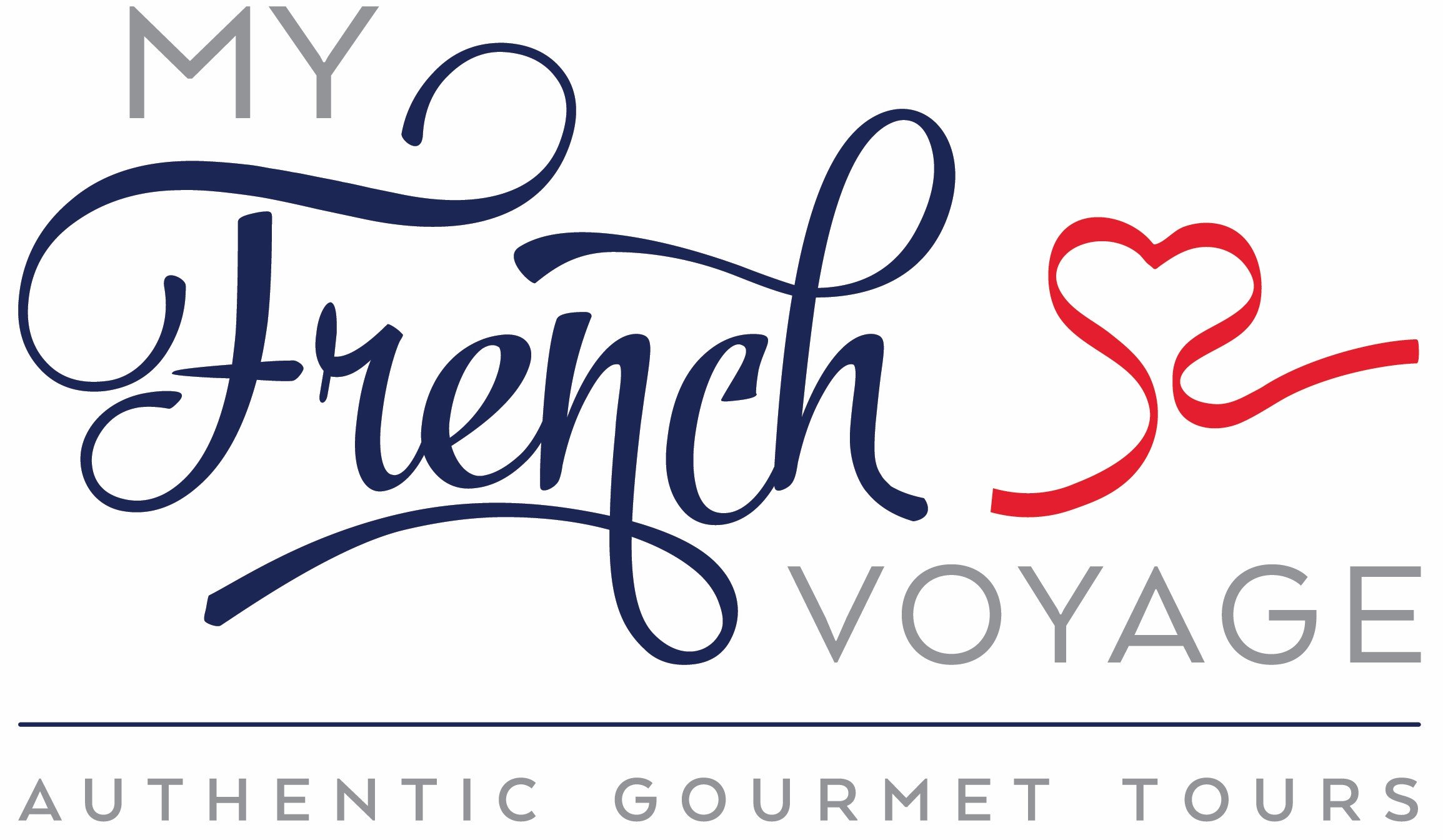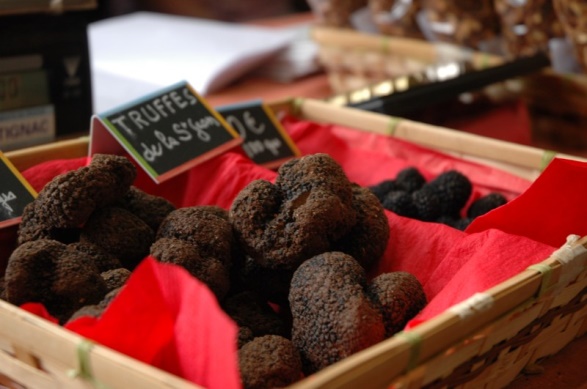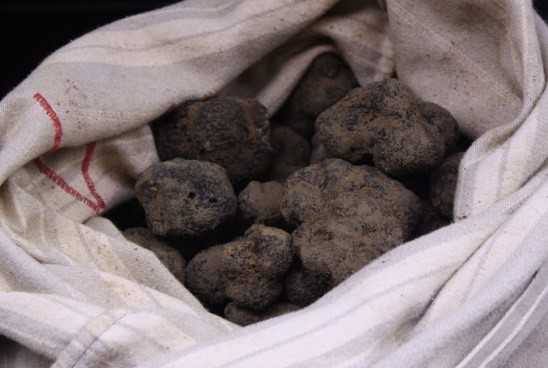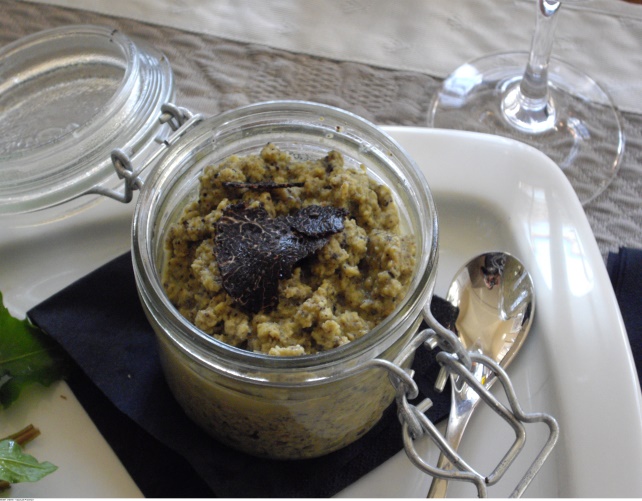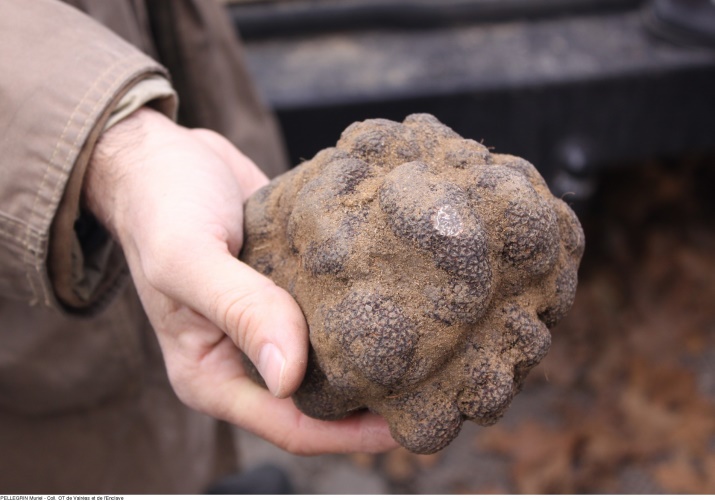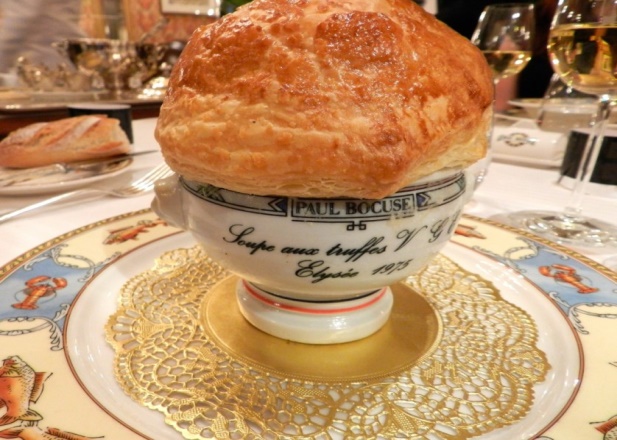The Black Périgord Truffle
The Black Périgord Truffle
Tuber melanosporum, called the black truffle, Périgord truffle or French black truffle, is a species of truffle native to Southern Europe. It is one of the most expensive edible mushrooms in the world.
Distribution
Tuber melanosporum is known around the world as the culinary diamond of the kitchen. Also referred to as the black winter truffle, or more commonly known as the Perigord truffle, named after one of the regions in France where it is commonly collected. Perigord truffles are native to Europe but they are also successfully cultivated in other parts of the globe, such as Australia (Western Australia and Tasmania).
It grows beneath different types of trees, the most common being the downy oak, the hazel and the hornbeam. It is mostly found on the plains or in airy hillside woods, where the trees are spaced well apart from one another. This is because the black Périgord truffle needs light and good air circulation to grow.
Perigord truffles have a dark outer skin with large, diamond-shaped pyramids, and a marbled chocolate or deep slate grey coloured interior when ripe.
Why is Perigord truffle so expensive?
With a price of about 1,000 to 2,000 Euros per kilogram ($1,500 to $3,000), black truffles are the second most expensive truffles after the Italian Alba white truffles and one of the most sought after edible mushrooms in the world. With a retail price of three or four times that amount, along with Beluga caviar, the white truffle is one of the world's most expensive luxury foods.
Truffles are expensive because it is very hard to farm them. They live inside tree roots, you can't just plant truffle seeds in a field or something. Usually you have to find trees small enough to transplant, growing in an area that already has truffle fungus, then dig up the small trees and plant them in a new area with the right kind of soil. The fungus that is living inside their roots will hopefully be transferred to the new area, and in 10-20 years, you might start getting truffle tubers there.
Be aware than most so-called truffle oil available in shops does not contain truffles at all but is produced synthetically to replicate (to some degree!) the unique odour of real truffles.
Season
During late summer, autumn and, all throughout winter in the far south of Europe.
The black Périgord truffle is harvested and sold from winter to spring, between the 15th of November and the 15th of March, to be precise. During this period, truffle hunters harvest the most aromatic and flavoursome black truffles for restaurants and gourmets all over the world. When it reaches maturity, the prized black Périgord truffle is at its most aromatic, with compact flesh characterised by marbled narrow white veins.
I recommend this product to be consumed as soon as possible, within a week. If stored properly they can have a longer shelf life, but the flavours decrease with time.
How to cook this fantastic mushroom?
In cooking, black truffles are used to refine the taste of meat, fish, soups and risotto. Unlike white truffles, the aroma of black truffles does not diminish when they are heated, but becomes more intense. For me, the best dish to appreciate its flavours is in an omelette with fresh farm eggs.
Paul Bocuse’s Truffle Soup recipe
This particular dish was created in 1975 for the president of France, Valéry Giscard d’Estaing, and his wife, at a lunch that took place at the Élysée Palace.
The Recipe
Chicken stock 2 cups (500 ml)
Skinless chicken breast 150g
Celeriac and carrot 100g
Heads of 8 button mushrooms
Fresh truffles 80 g
White Noilly Prat 60 ml
Cooked foie gras 60g
Puff pastry 250 g
Egg yolk 1
Method:
Bring stock to a boil in saucepan. Lightly salt the chicken breast and place it in the stock. Leave it to simmer for six minutes, then drain. Put the stock for the soup aside.
Peel the celeriac and the carrot. Cut the celeriac and the carrot in brunoise.
Cut the mushroom heads into thick slices, then into strips, and then dice. Mix them with the celeriac and carrot.
Cut the truffles into fine slices.
Pour 1 tablespoon of Noilly Prat into each of four ovenproof porcelain bowls that hold 1 to 1¼ cups (250 to 300 ml). Add 1 rounded tablespoon of the vegetables, to evenly distribute them among the four bowls.
Cut the chicken breast into thin slices, then dice. Distribute them among the bowls.
In the same way, add the truffle slices.
Fill up the bowls with the stock, up to 2-cm below the brim.
Roll out the puff pastry on the work bench. Cut out four circles, 12 to 14 cm in diameter. Place a pastry circle on each bowl. Turn the edge down over the brim, pressing lightly to seal it.
Mix the egg yolk with a teaspoon of water and a pinch of salt. Brush it over the pastry. Place in the oven, and cook for 20 minutes at 200°C. Cut the edge of the pastry with the point of a knife. Serve all at once.
Bon Appétit!
